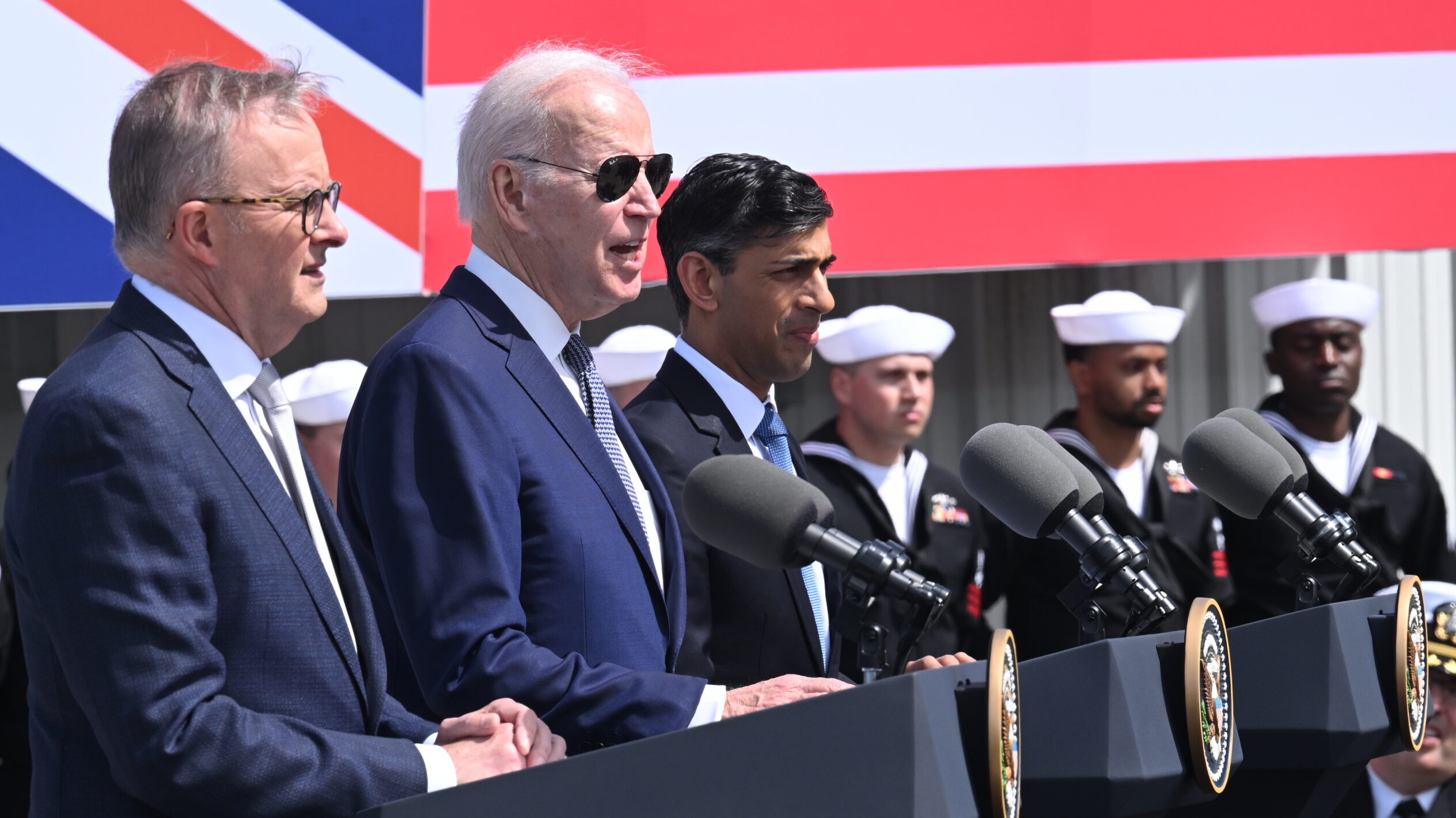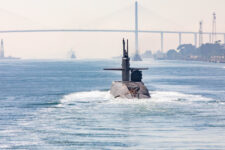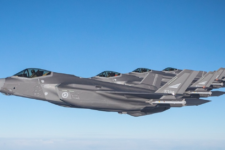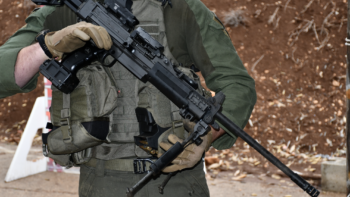
Australian Prime Minister Anthony Albanese (L), US President Joe Biden (C) and British Prime Minister Rishi Sunak (R) hold a press conference after a trilateral meeting during the AUKUS summit on March 13, 2023 in San Diego. (Photo by Leon Neal/Getty Images)
SYDNEY — While there’s been vigorous talk of rising defense budgets here, Australia’s military spending is slipping for the next two years, according to a new analysis by the Australian Strategic Policy Institute.
“The only increase in the Defence budget over the next three years is compensation for the increased cost of imported military equipment flowing from a fall in the value of the Australian dollar,” reads the report, by co-authors Jennifer Parker, David Uren, Bec Shrimpton and Rob Bourke, and published today. “Excluding this, the core funding of Defence (not including the Australian Signals Directorate) has actually been reduced at a time when unprecedented demands are being placed upon it. Between 2023-4 and 2025-6, Defence funding, excluding compensation for adverse foreign exchange movements, drops from $154.0 billion [$100 billion USD] to $152.5 billion [$99.4 billion USD].”
The dip was seized on by the Australian opposition party. “Labor have cut $1.5 billion (AUD) from Defence when Australia is facing the most uncertain strategic circumstances since the Second World War,” the shadow defense minister, Andrew Hastie, said in a statement today. “The Albanese Government must explain why they have cut defence funding, with no new money allocated for Defence, despite their Defence Strategic Review (DSR) warning of Australia’s ‘deteriorating strategic environment’.”
The planned spending would seem to be at odds with the pledge to fund the biggest program in Australian history, the planned purchase of a small fleet of Australian nuclear powered attack subs, supplemented by at least three American Virginia-class subs. The AUKUS program will cost an estimated $368 billion AUD ($240 billion USD) and generate up to 20,000 jobs, the Labor government estimates. And the government says it plans to more broadly beef up the Australian Defense Force in both size and capability.
“However,” the ASPI report says, “the urgency of the demands upon Defence isn’t reflected in its short-term funding.”
When are things supposed to look brighter for those building the capabilities upon which the military depends? “New funding for Defence will not be available until the medium-term (2027-28), with a further $30.5 billion provided over the six years to 2032-33. This funding would lift Defence funding to more than 2.3% of GDP, based on Treasury’s economic projections,” the report’s authors say.
In the meantime, 6 percent inflation is eating away at chunks of planned spending, and Australia is scrambling to find money to attract and retain troops, who are well placed to find jobs in a country with historically low unemployment.
“Defence had planned for the ADF to raise its numbers this year (2022-23) by 2,201 but instead faced a contraction in size by 1,389 uniformed personnel,” the report notes.
One of the key tools for guiding spending and policy will be the Defence Strategic Review. Last month the Albanese government released a public version of its classified DSR — but relatively little is still known about the classified details. To help match government spending to the DSR’s priorities, this weekend the Albanese government announced the creation of a Defense Strategic Review Oversight Panel, led by the co-authors of the DSR, Stephen Smith and Sir Angus Houston.
The panel will include a former secretary of the Department of Defence, Dennis Richardson, a former secretary of the Department of Finance, Rosemary Huxtable (presumably to keep a close eye on the money flow) and a former deputy secretary of the Department of Foreign Affairs and Trade, Richard Maude.
The ASPI report makes clear there is a “disconnect” between the DSR and the current budget. The new panel will be charged with helping to make sure that doesn’t persist and the government makes the right choices about capabilities and spending. “That work,” they write, “is to be completed ahead of the planned 2024 National Defence Strategy, which is expected to be released before next year’s budget.”
In the meantime, the uncertainty of the government’s planned investments — made worse by the fact that the vast majority of the DSR is classified and relatively few budget details have been released — “will affect defence industry as the scope and schedules of major programs are reviewed,” ASPI said.
The report also took issue with the government’s stance when it comes to foreign versus domestic defense spending. “Although Defence has raised the share of its procurement sourced domestically from about 45% to 55% over the past five years, it’s possible that the pressure to acquire new capabilities quickly will result in more ‘off-the-shelf’ imports,” it says.
Like the spending bottom line, the buy-foreign aspect is already generating criticism and political heat. The Australian Broadcasting Corporation published a story today about a $307 million AUD ($200 million USD) marine surveillance system bought from the US. The equipment is the Surveillance Towed Array Sensor System Expeditionary mission systems for Vessels of Opportunity (VOO). It hasn’t officially been announced in Australia, but the US Defense Security Cooperation Agency announced the likely purchase on May 4.
The Australian Department of Defense told the ABC that the federal government authorized the department to buy it via the US Foreign Military Sale system to get it more quickly, although the story says the technology has been manufactured “for decades” here.
Jobs for defense programs are golden coin in the political realm here. Consistently buying and building foreign, though everyone accepts it is necessary for many weapons, will not help a Labor government win votes in the next election.






















